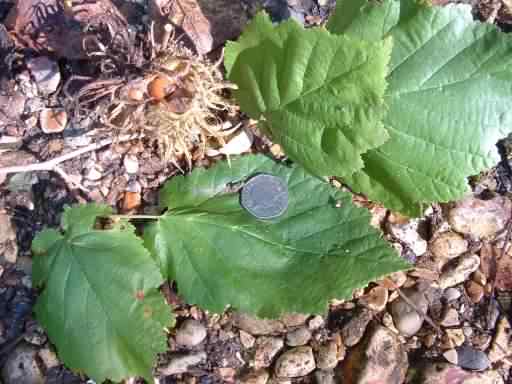
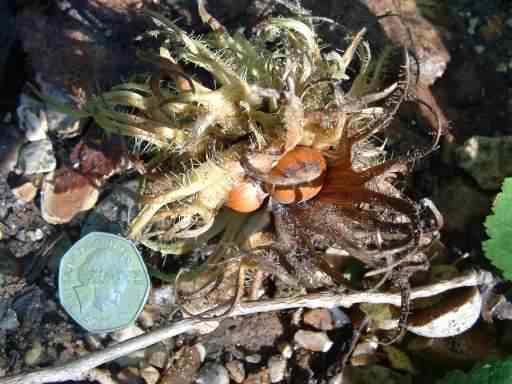
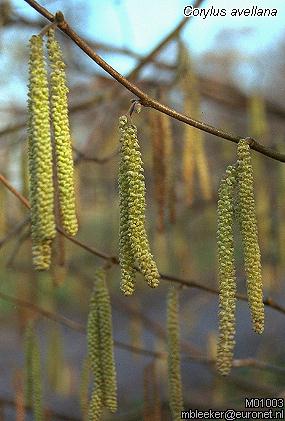
Male catkins
Photo ©2002– , Marco Bleeker

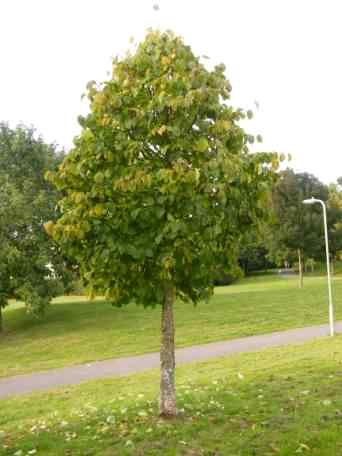
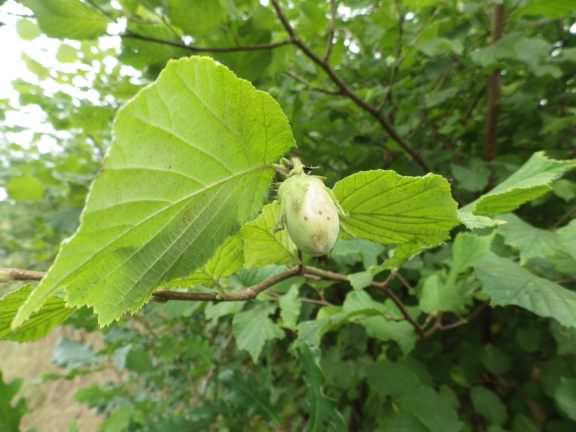
Click any photo for a larger image
Close windowHazel - Corylus avellana
Family - Betulaceae
Also known in Ireland as Coll
Tall deciduous shrub or small tree growing to 6m (20ft) and sometimes 12m (40ft), very often coppiced and used for hedges. Maximum age 70 to 80 years old. Found over most of the British Isles and Europe, West Asia, North Africa and North America except on acid soils, often as an under storey in Oak woodlands. Grows from seed sometimes, dispersed by animals. Easily grown from nuts kept cool and moist till spring. alternate oval leaves having doubly serrulate edges and short hairs. Small red flowers and pendular yellow male catkins up to 5cm (2in) borne in clusters on the same tree, appear during January to March often when nothing else is in flower or leaf. The inconspicuous female flowers ripen to edible brown nuts in the autumn (October), each nut is surrounded by two leafy green bracts fused together to form an open ended protective covering. Grows reasonably abundantly in woods and on sunny slopes in most areas.
Tough flexible wood white to reddish in colour, it used to be extensively coppiced providing long sticks for cask hoops, basketry, walking sticks, hurdles, thatching, spars and divining rods. Many superstitions associated with hazel from Celtic times. Makes good firewood. Nutritious and tasty nuts taken by large birds, squirrels and mice (that store the nuts). Nuts produced from pruned bushes grown in open conditions like a fruit orchard are called Cobnuts. They are a commercial form of the Hazel nut with Turkey being the largest producer, although in the UK, Kent has produced large quantities. The nuts are also known as "Filberts" in some areas because they were traditionally harvested on August 22nd, St. Philbert's Day, however these are classified as C. maxima, are larger than C. avellana and are completely enclosed by the bracts. Several cultivated forms of hazelnuts exist including Webb's Prize Cob, Cosford Cob and Nottingham Cob, these tend to produce better nuts than the wild forms. Several varieties are grown for ornamental trees, one having contorted branches Corylus avellana "contorta".
 |
 |
 Male catkins Photo ©2002– , Marco Bleeker |
 |
 | |
 |
Five left photos ©2011– Click any photo for a larger image Close window |
Site design ©1999– Brickfields Country Park - Privacy -